Darlene and I made a deal. She would come with me to visit the Biosphere 2 if I would go to the Center for Creative Photography the next day with her. So we drove north of Tucson for 31 miles to Oracle Arizona and walked into the place where 8 humans locked themselves inside a hermetically sealed environment for 2 years and 20 minutes back in 1991.
Biosphere 2
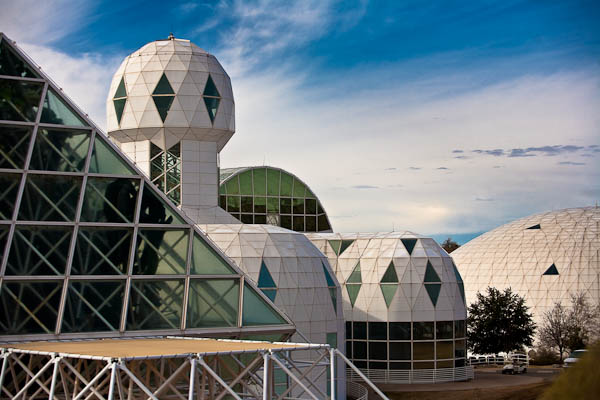
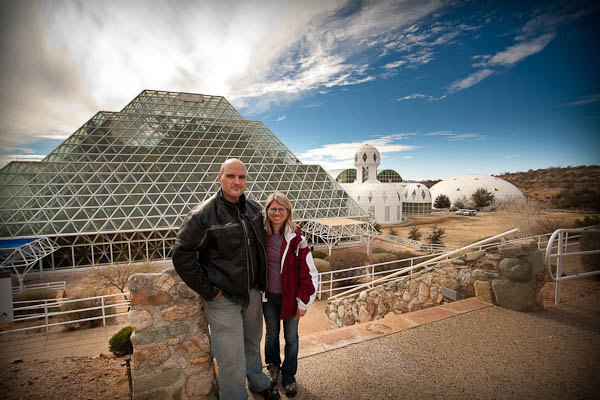
3.15 acres lies beneath a complex set of 6500 panels making up 7,200,000 cubic feet of glass and sits on top of a 500 ton stainless steel liner. Sealed on top, sealed below, the Biospherians would be breathing the same air and drinking the same water that they started with, for two complete years.
They had to live on what they could grow inside the structure and use nature, sealed with them, to create their oxygen and manage their CO2.
After paying $20 each to enter, half of which is tax deductible because it’s a donation to a University, we entered Biosphere 2 human habitat. The kitchen was directly opposite the entrance door and to its right, the human living quarters. Each Biospherian had a 2 story apartment like structure with a front room on the lower floor and a bedroom above. A bathroom between units was shared by two people.
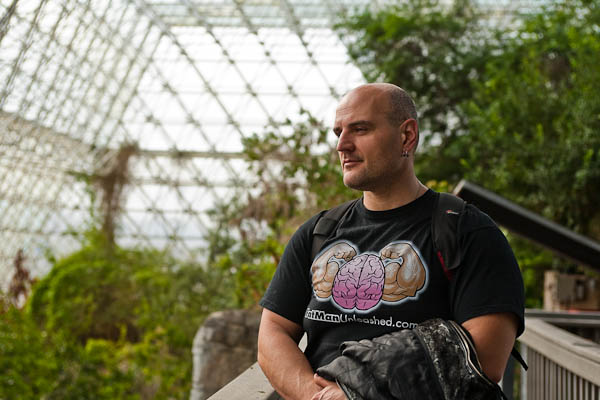
I knew Biosphere 2 had a rain forest and Savannah grassland, but did not know there was an ocean with coral reef within its walls. We started in the rain forest, overlooked the ocean and then walked through to Mangrove wetlands and then the grassland a little lower. Next was the Fog desert before passing by the Ocean. A small ocean it was, compared to Biosphere 1 (planet Earth), but a bigger ocean than you’d expect inside a sealed environment. The ocean inside Biosphere 2 contained 1 million gallons of water. A million gallons! We were told that for fun, the Biospherians would climb the steps to the ledge and cliff dive into the ocean.
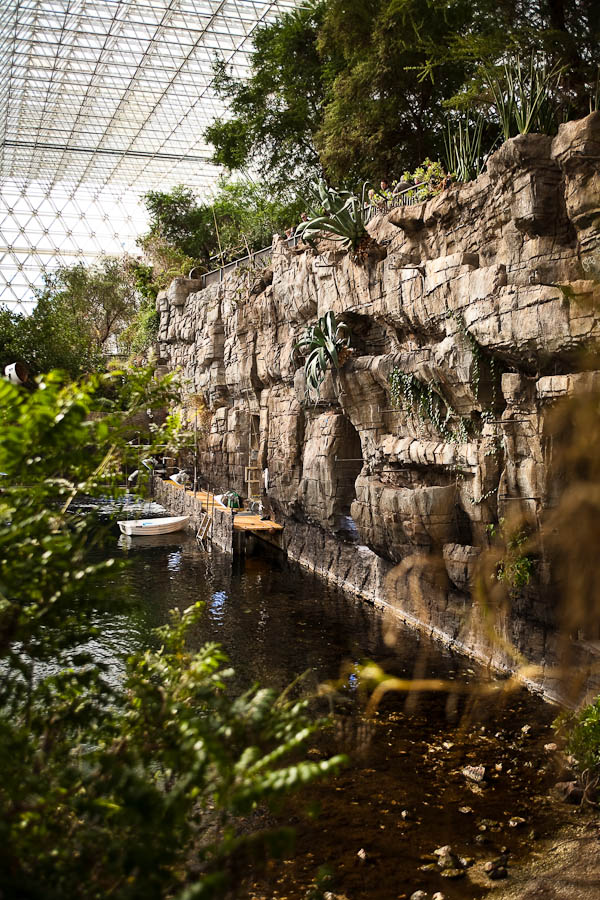
Biosphere 2 Lungs
A friend on Facebook had shared with me his experience of the Biosphere 2 lungs. I had a completely different picture in mind. I thought the lungs would be some sort of accordion like device to pump and move oxygen like they did while digging the tunnels out of the prisoner of war camp from the movie The Great Escape. I was not prepared for what we were shown.
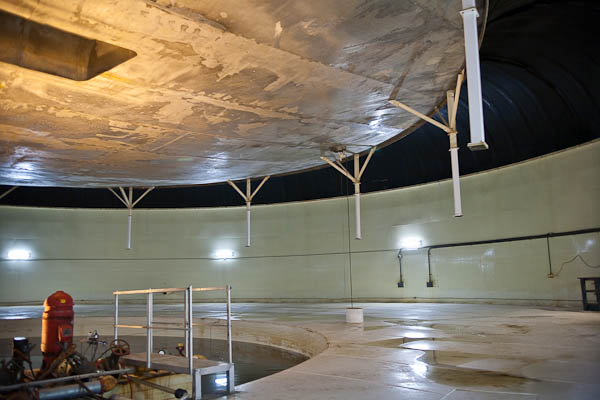
After walking down a very narrow passage, sloping downward away from the main complex, we entered a very large room. In the center of the ceiling above was a 16 ton steel plate connected to the walls by a rubber type material that expanded and contracted with the pressures inside Biosphere 2. The rubber material was similar to say a car tire, but obviously much larger to be able to support 16 tons of metal. This room is massive to say the least. The lungs were designed because of air pressure changes that took place over the course of a day within the sealed environment.
Biosphere 2 needed something like a bellows, a lung!
Biosphere 2 would heat up like a greenhouse and cool during the night and during cold, cloudy days. The expansion and contraction would subject the rigid steel and glass structure to enormous pressures as the air inside expanded and contracted. On a hot day, pressure would push out. On a really cold day, Biosphere 2 might implode.
Bill Dempster, Director of Engineering Systems, had an inspired solution, and in time Biosphere 2 got a pair of lungs, or “variable expansion chambers”. The two lungs took the form of graceful hemispheric white domes which protected the liner from wear and tear of the Sun. Both domes, 150 feet away from Biosphere 2 had underground air tunnels connecting them to the main structure. Inside each tank and connected to each tunnel, a gargantuan synthetic rubber membrane with a circular metal top moved freely up and down on a cushion of air.
As air inside Biosphere 2 expanded from the Sun’s heat, it flowed through the tunnels and into the lung, raising its top. As air cooled, the lungs deflated.
Excellent photos of the Biosphere 2 lungs and their construction are here .
We experienced the effect of this lung as a door to the outside was opened and the air was let out. We were not in a sealed environment, so our Biosphere guide could show us how they worked. When the door was opened, the steel plate began to descend. He closed the door and it inflated again. Something you have to experience to fully understand. I had a new appreciation for the technology of this place.
So… just to be clear… that 16 ton plate in the variable ceiling above us (as seen in the picture) was being held aloft by air. If the windows in the environment above were all suddenly smashed, that 16 tons would come crashing down almost instantly!
Biosphere 2 had a second lung on the other side of the complex, but the one we were in served a second purpose. At its bottom lay a water condensation capture tank that could also be used for fire suppression if needed. As water condensed inside Biosphere, it made its way to the bottoms of everything (of course) and was then gathered at the lowest point, down here in the lung. In case of a fire, they could turn on the pumps and use this water to put them out. I’m pretty sure that’s how it all goes.
In the first two photos on this page, of the Biosphere and of Dar and I outside it, you can see one of the lungs at the far right hand side of the photographs.
My Biosphere 2 disclaimer: I am not an expert in the Biosphere 2. I saw it on TV when they were going in, I’ve always wanted to go there, have done so, am reading Jane Poynters book The Human Experiment and simply want to share my experience. I may very well have already messed up the order in which the biodomes appear on the tour, and that’s the way it shall be. End disclaimer.
By the way, Jane Poynters book The Human Experiment, detailing her time before, during and after her time inside Biosphere 2 is excellent if you want to know more. She lives in Tucson and is now married to one of the other Biospherians, Taber MacCallum.
We didn’t actually make it into the agriculture biodome where they grew their food, but we could see it. It has since been emptied of earth, but can be seen from the human habitat.
Biosphere 2 Gym
I wanted to check out their gym and asked our guide a lot of questions about how many steps they may have walked in a given day around the Biosphere. I saw places in which they’d be able to get in a jog with a few sets of stairs in between. I made a point of seeing where the gym was and asked what type of equipment they had access to.
I was told that they simply did not use the gym and the explanation made sense. More so now that I’ve read The Human Experiment.
They almost ran out of oxygen, and simply did not have the energy to exercise above the work they were doing. They were up at 6 am and went to bed shortly after their supper meal.
What happened was that they did not account for the effect the cement would have on oxygen and over the course of the first few months, lost 7 TONS of oxygen. In what we were told was a conversation in passing, they realized it was the cement absorbing oxygen. Our guide told us that they were talking with an expert by telephone about the problem and he said, “I don’t know of anything that would remove oxygen except for ____, ____ and cement”. They were surrounded by cement. All they had to do was seal it up and they stopped the oxygen loss.
Their oxygen level began at 21% when they went in and got as low as 14.2%. Oxygen that low is similar to being at the same altitude as Mt Everest Base camp. When I climbed to Base Camp back in 2008, I had intended to do push ups on various days during the climb, but based on oxygen levels (and resulting energy levels), didn’t. I know exactly how they felt after putting in a day’s work.
Biosphere 2 Technosphere
Technosphere is a term the Biospherians came up with themselves. It describes all the technology underneath the biodomes. All the pipes, wires, tanks and everything else that’s not seen by anyone looking in, that keeps the place running. Jane Poynter describes the technosphere of Biosphere 2 as the only place they could go to get any privacy. Being inside a glass bubble, anyone curious to see what was happening inside, could and did make their way to the edge and look in. The Technosphere was where they could get away from the cameras.
We ended our tour where we started, in the human habitat.
I made note of the design of the kitchen as I’d like to model some of its pieces into my own kitchen and then walked through the rest of the space. We didn’t have access to their apartments, but a window has been put into one for us to look into. The bathrooms as I said earlier, were available for tourists and I used one. Had to, didn’t I. Wouldn’t You?
I purchased The Human Experiment in the gift shop on the way out and have since learned more about the experiment, how it came to be and what they’ve learned from it.
Biosphere 2 was surrounded by so much secrecy and bad press at the time it took place. So many people thought they were hiding things and were not play fair. I did not follow it when it happened, but I knew the project was going on. I’m so glad to have been there now, and seen it for myself. I highly encourage you to check it out next time you’re in Tucson.
Arizona Desert Museum
I’d been to the Desert Museum before, and wanted to take Dar. We were heading to the Saguaro National Park, and the museum was IN the park, so stopped for a walk around.
We saw Otters, beavers and a raccoon. We saw bob cats, big horn sheep, mountain lions and a black bear (the new guy in the museum). We walked into a hummingbird aviary and saw javelinas (7 of them, sleeping).
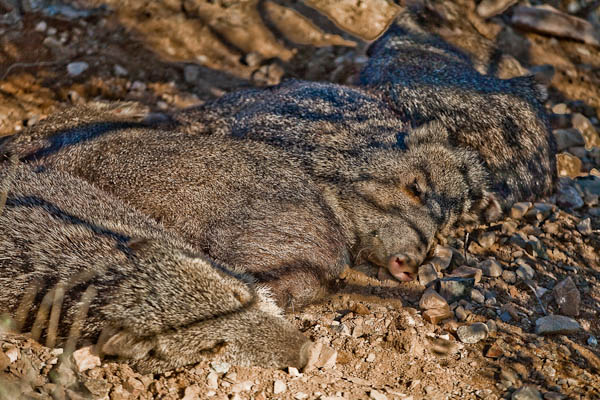

Aside from the mammals, the Arizona Desert Museum takes care of over 40,000 plants representing 1400 different kinds. It’s a zoo and a botanical garden all in one place. Today was the day for Dar to photograph cactus, so when we passed by Cat Canyon, we had to do the loop into the Cactus Gardens.
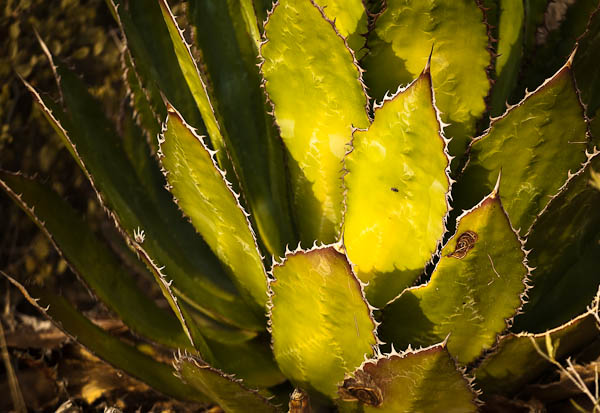
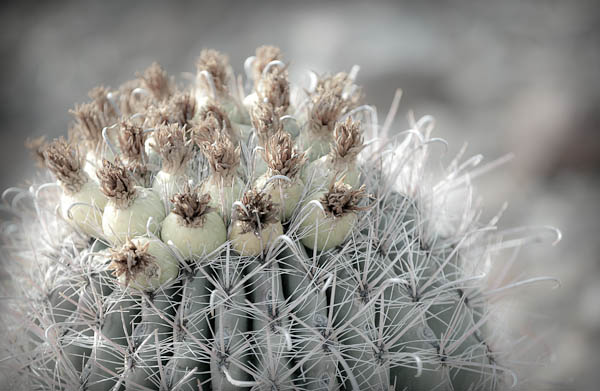

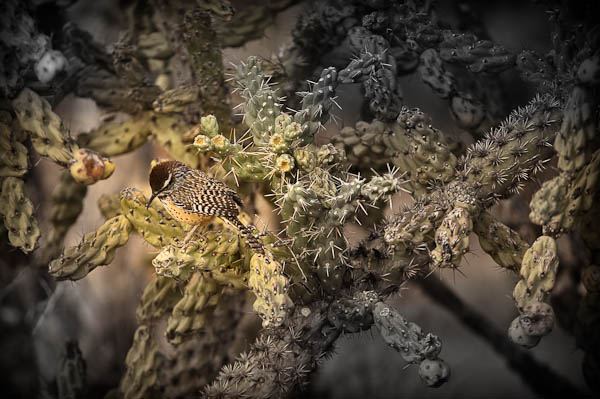
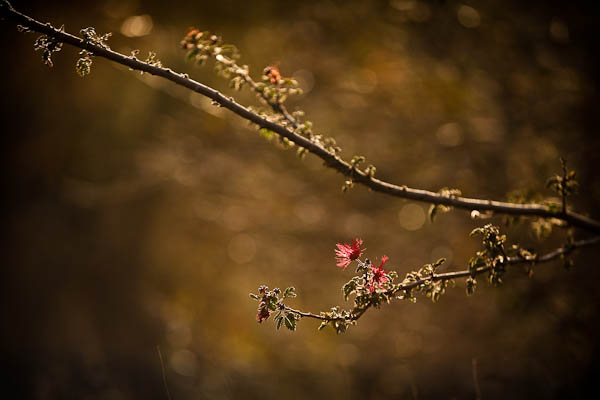
We rushed through the museum, I must admit. Being married to a professional photographer, I’ve come to realize that you’re “always chasing the light” and we had to get set up in the park so Dar could get her shots of the Saguaros at sunset.
I was the one watching the clock and rushing her through as she photographed the animals and cactus, and finally the time came when we had to leave.
We moved on to…
Saguaro National Park
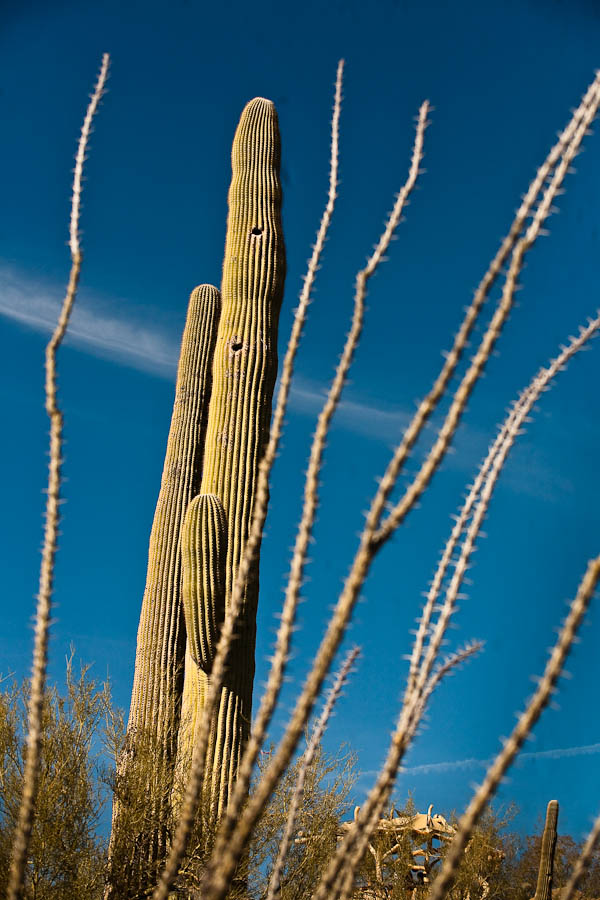
This saguaro is synonymous with the American west, but the plant is only found in select areas of the United States and Mexico. Saguaro National Park, located just outside the city of Tucson, was created to protect some of these giant beasts. They have a long life span of over 150 years, and the arms themselves can take 75 years to grow. The saguaro blossom is the state flower of Arizona, and in Arizona, by state law, it is illegal to harm a saguaro in any manner.
Dar wanted to shoot an HDR photo of the Saguaro cactus in the setting sun. I drove (slowly) down the road as she was looking for the right cactus and the right angle. When we finally found our spot, we set up tripod and waited for the light. And waited for the light. And waited
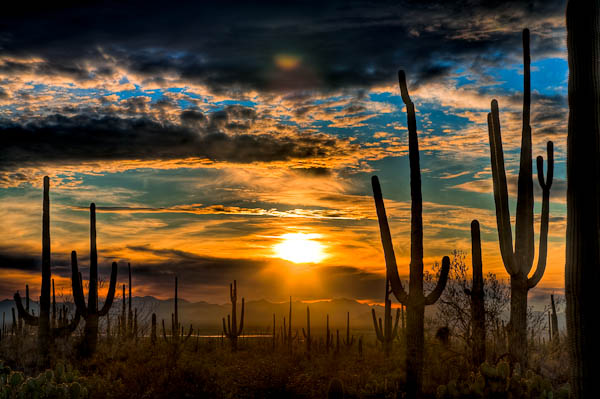
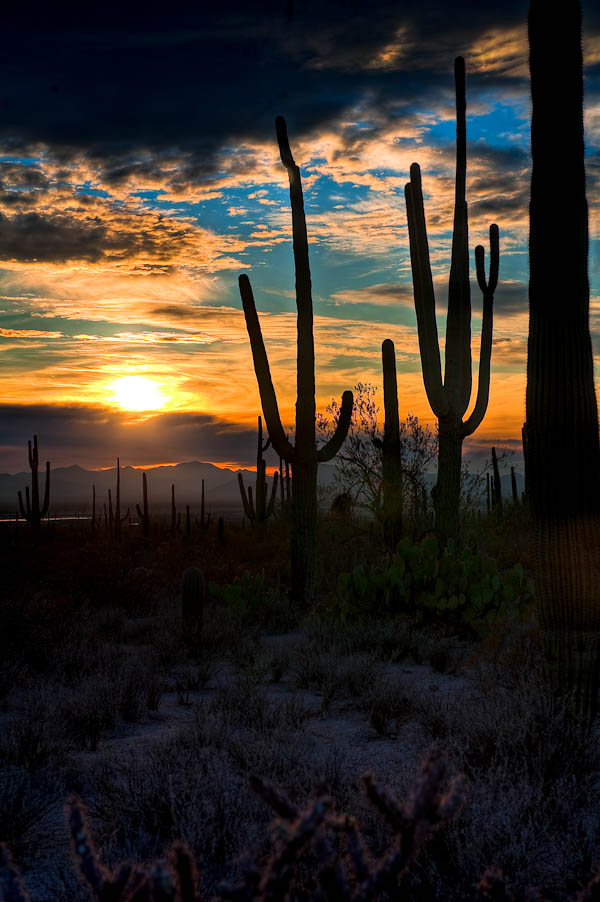
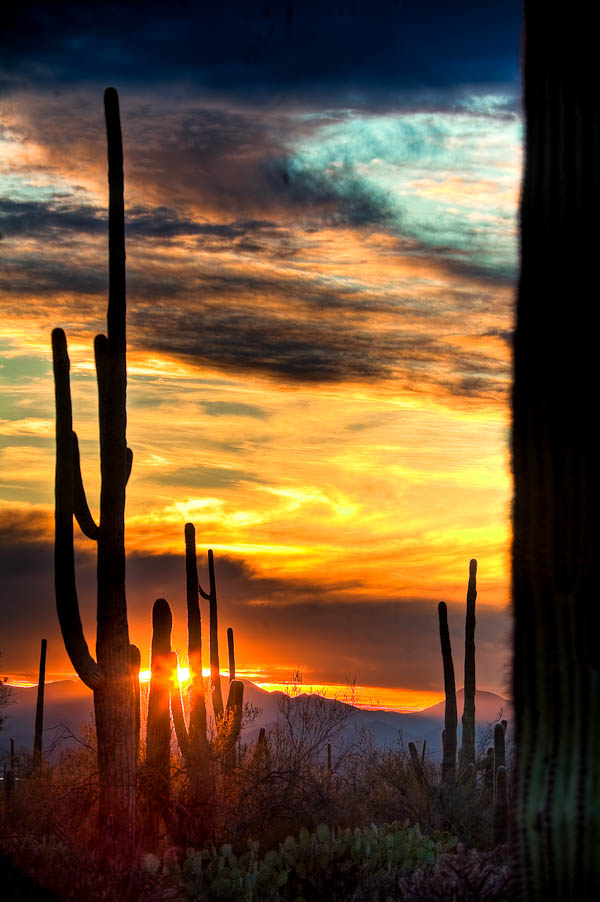
When the day was done, we headed back to Tucson and decided to visit Fourth Avenue again and have some Guatemalan food.
Maya Quetzal Restaurant on Fourth Avenue
Dar had the chicken mole and I had some other sort of chicken. Both dishes served with black beans and rice and is probably in our top 5 meals eaten on our trip so far. We like clean whole food and Maya Quetzal provided just that for around $10 each. If you’re looking for great vegetarian food in Tucson, this is certainly a place for you to check out.
When we left, our plan was to return the next day for another taste of items on their menu.
Spending time inside Biosphere 2 was amazing and something I’d encourage anyone to do when they’re in Tucson. The trip back to the Desert Museum was worth the time and the road leading out of Tucson to the Saguaro National Park is a fantastic drive to make as well. For Dar to have finally gotten the sunset cactus shots she wanted made me happy. Tomorrow, our last day in Tucson would be equally filled with adventure and a happy accident.
Images in this post are available for purchase on the Her View Photography online gallery at Zenfolio.com.
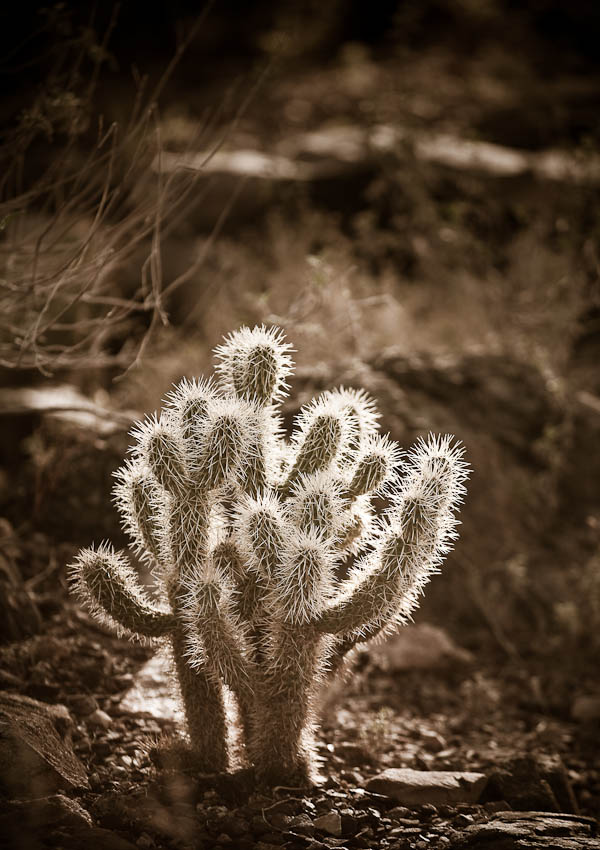
Wow, Rob and Dar – what an amazing trip you must be having – and what SPECTACULAR photos.
Loved seeing them.
Diana
And thank god you support chasing the light as your wife is an AMAZING photographer. I see such a great book being written on this blog:)
Miss you!
RA
Great photos, Darlene! And what an interesting experiment the human biosphere sounds to be. I will check it out.
WOW!!! ..a very interesting experience and AMAZING photos!! Thanks for sharing:))
Rob : Now I get why you are fascinated by the show Lost! Ha! The biosphere is quite interesting.I want to climb on the cliff and jump into the water.
Darlene: The photos are stunning. My favorite is the desert sunset. Gorgeous! I agree with RA about chasing the light!
Thank you for taking the time to share your words and pictures. XX C
We met you on Saturday, January 30th in Bisbee at dinner time at the High Desert Market restaurant and had a nice chat with you about your camera and your travels.
We hope you enjoyed south eastern Arizona it really is a pretty unique area. How are your travels progressing to Corpus Christi – I look forward to viewing more of your photographs they are very special and captivating.
Happy trails!
Linda Nichols
Linda, thank you for your comments.
We’re currently in Corpus Christi and catching up on blog posts. Hope to be caught up with our adventure in the next few days. About to publish our last day in Tucson very soon.. then our trip to Tombstone and Bisbee
FYI for all Young Snowbirds readers: Road Trip calendars for 2011 are now available on my site. I had so many images and requests to have them that I have created a calendar of some of my favorites from the road. You can see all the images in the calendar and order one on my photography blog at: http://www.herviewphotography.com/2010/09/30/road-trip-2011-calendars.html